

CarExpert.com.au
The CarExpert team's favourite cars of 2025
6 Hours Ago
The updated Mitsubishi Eclipse Cross has had a growth spurt, putting it up against the enduringly popular Mazda CX-5.

Senior Contributor
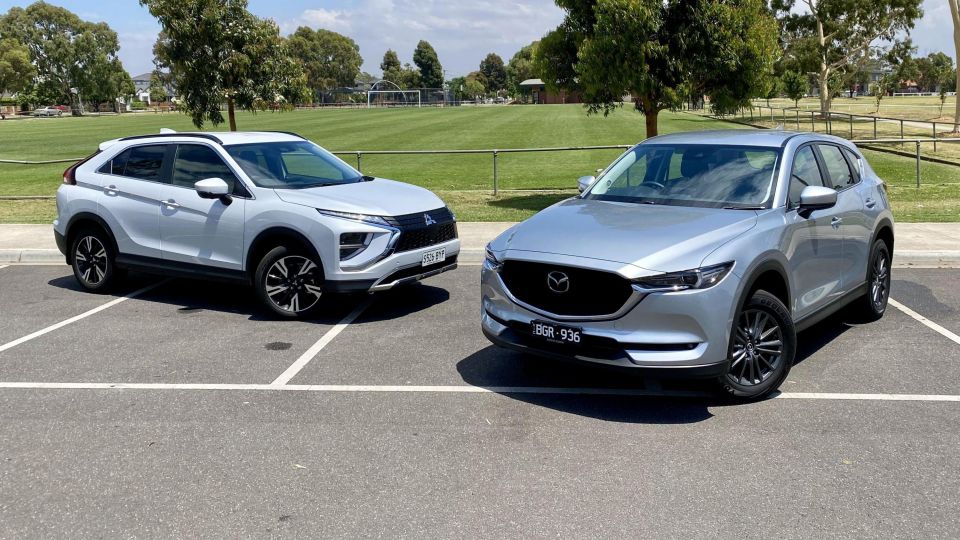

Senior Contributor
Contrary to what you might have been led to believe, the newly upgraded Mitsubishi Eclipse Cross is actually a pretty close on-paper competitor to the enduringly popular Mazda CX-5.
The Eclipse Cross redesign, which brings a completely different tailgate and more aggressive frontal look, has also added 140mm to its length – giving it dimensions in line with vehicles classified as belonging to a different segment. It’s actually just 5mm shorter than the Mazda.
So, with all this in mind: can it compete against a class staple in the CX-5, which has gone without an upgrade of its own for a while now?

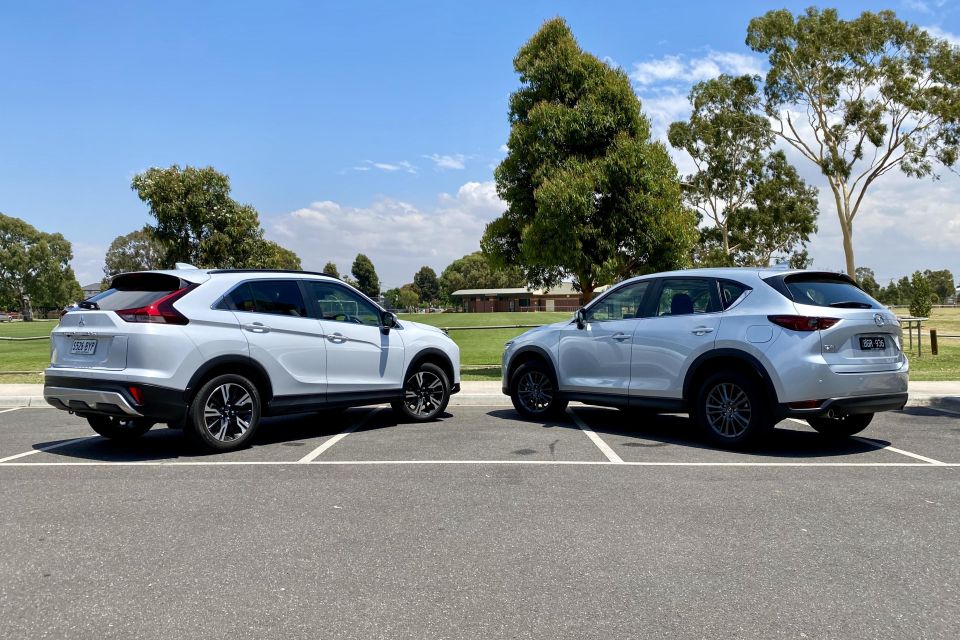
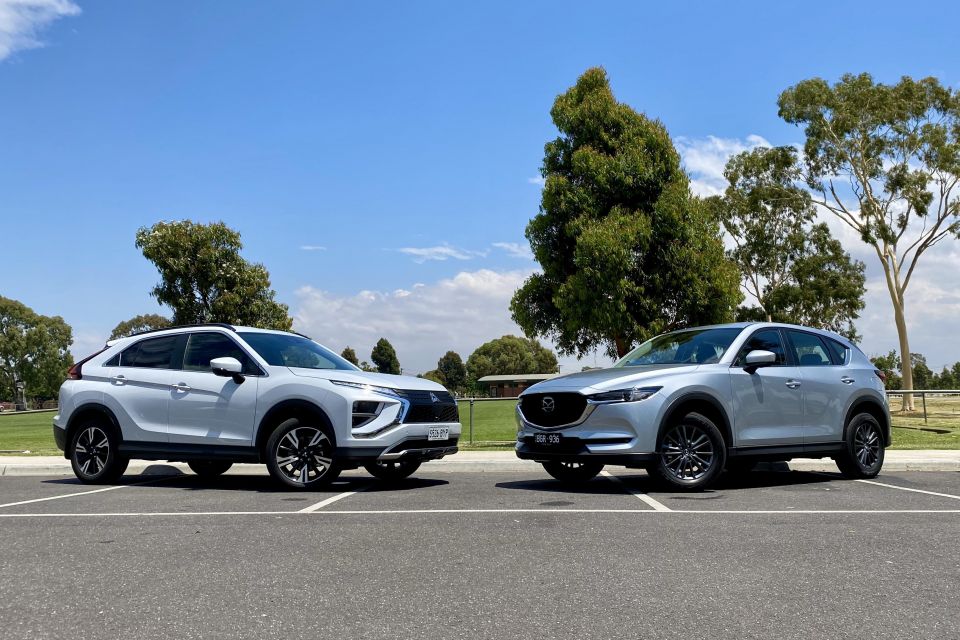
There are four specification grades available in the Eclipse Cross line-up, kicking off with the ES, jumping to the LS, Aspire, and Exceed.
We have the Eclipse Cross Aspire on test here, which wears a recommended retail price of $34,990 plus on-road costs. Mitsubishi is advertising it at $36,490 drive-away, which is the figure you’re actually expected to pay.
The Mazda CX-5 Maxx Sport variant tested here sits one rung above the base Maxx, and below the Touring, GT and Akera specifications. Its listed RRP is $36,290, while the drive-away price advertised is $38,240.
So the Mitsubishi has a $1750 price advantage before you get down to dealer haggling, making this pair reasonably close competitors.
It’s worth keeping an eye on the offers pages to see if there are any deals on at the moment. You can find the Mitsubishi offers page here and the Mazda offers page here.
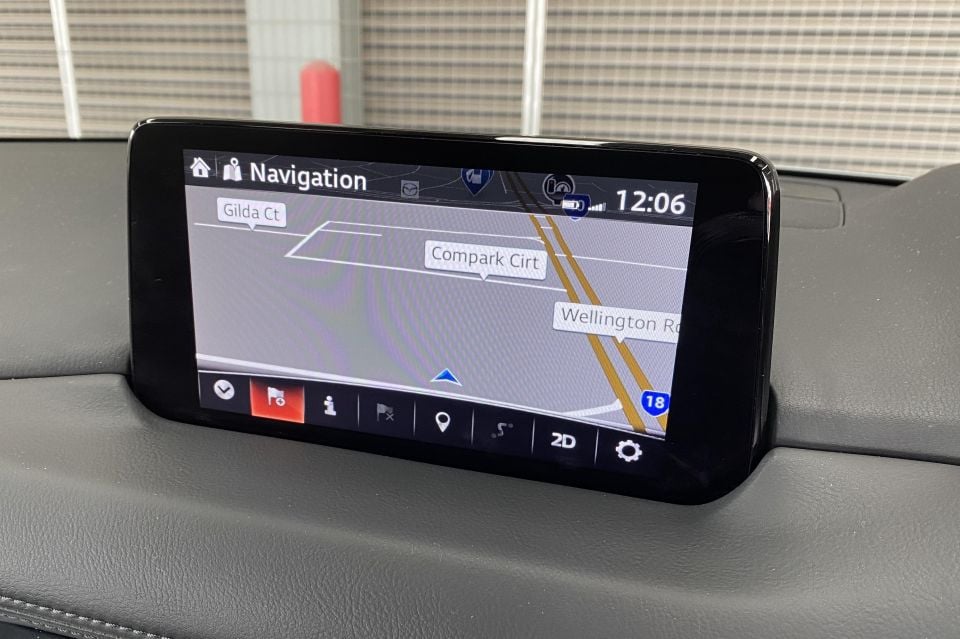

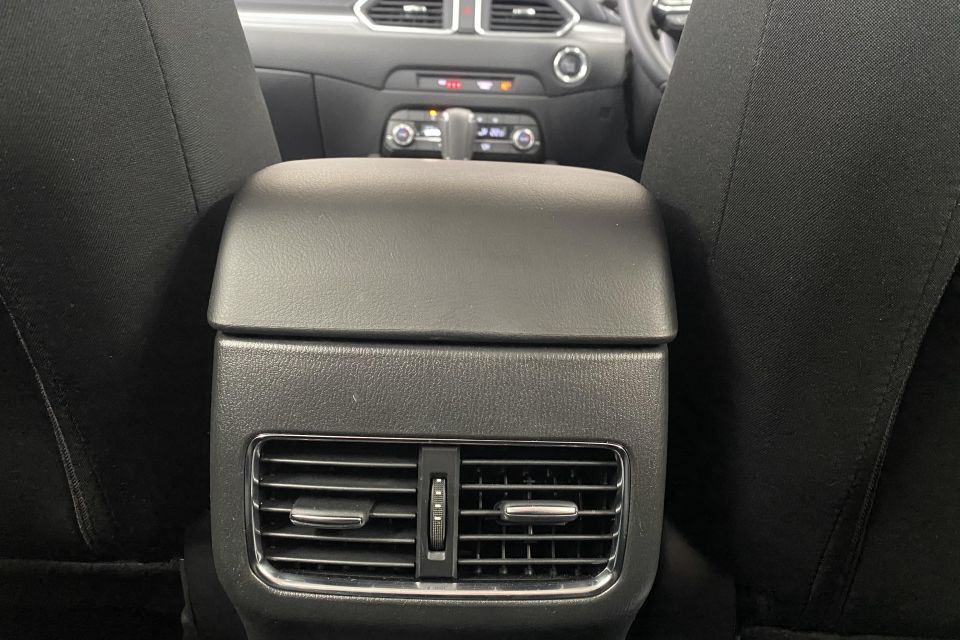
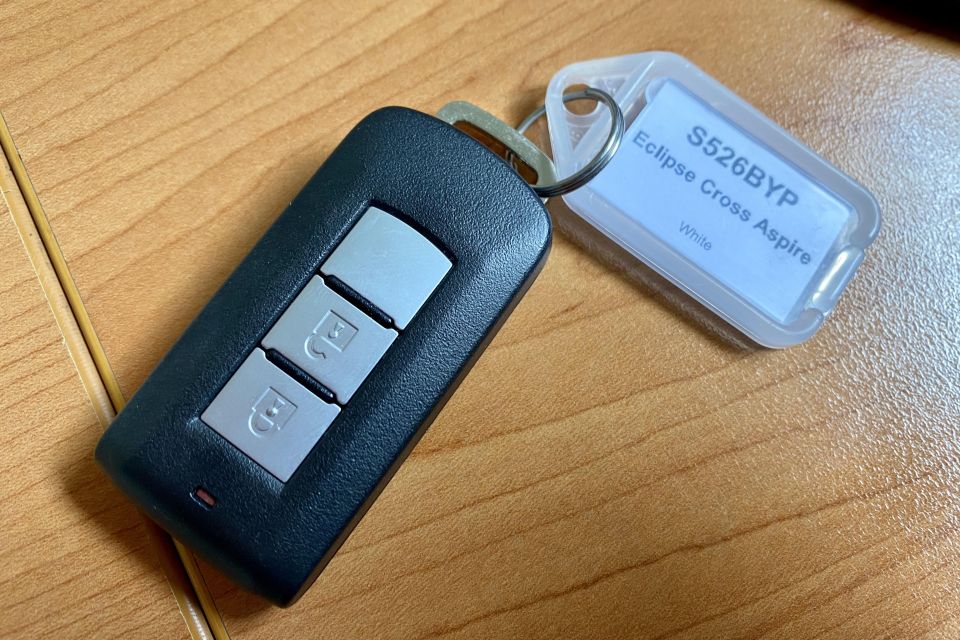
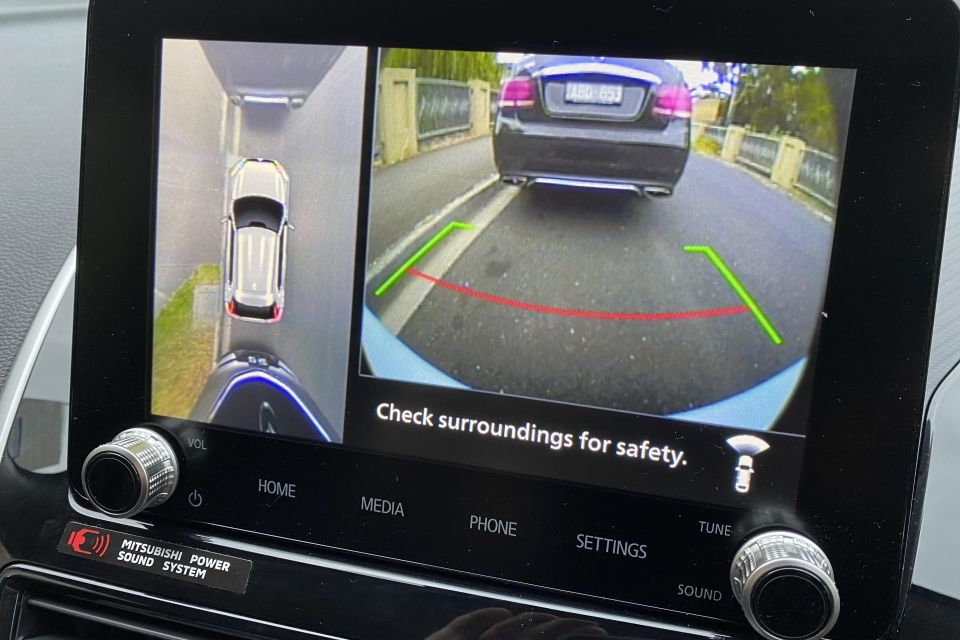
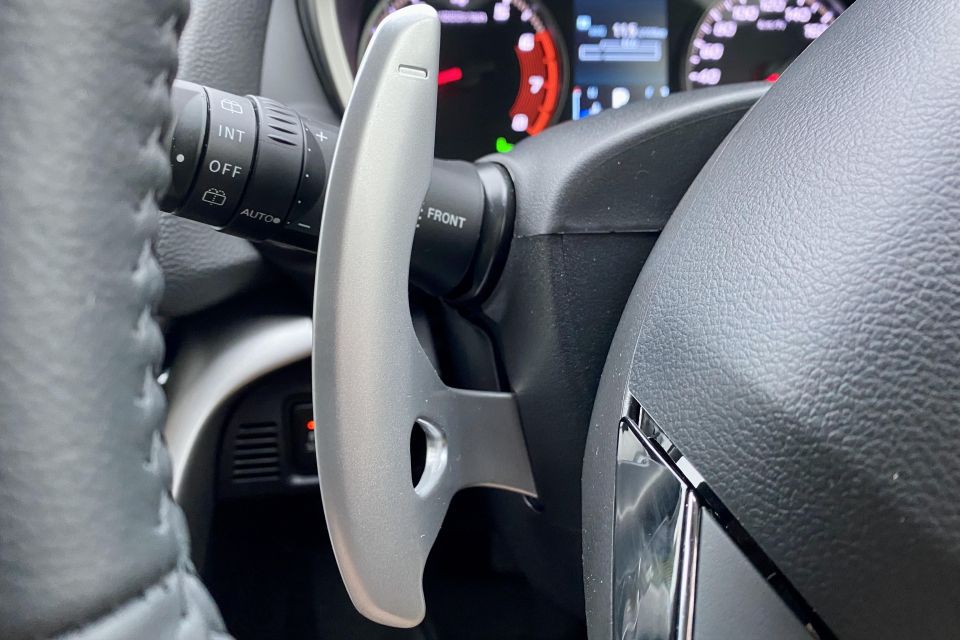
Features common to both include:
Alloy wheels, a space-saver spare wheel, LED fog lights, a manual tailgate, rain-sensing wipers, dusk-sensing headlights, rear parking sensors, reversing camera, dual-zone climate control, auto-dimming rear-view mirror, push-button start, an 8.0-inch screen, wired Apple CarPlay/Android Auto, and DAB+ digital radio.
Features unique to the Mitsubishi include:
Proximity key fob access, auto-folding side mirrors, LED daytime-running lights, front parking sensors, powered driver’s seat, heated front driver and passenger seats, overhead 360-degree camera view, and paddle shifters.
Features unique to the Mazda include:
LED headlights (halogen on the Mitsubishi), satellite navigation, rear-seat USB points, and rear-seat air vents.
You can find further details on all the options and inclusions offered across all variants in the Mitsubishi Eclipse Cross website and the Mazda CX-5 specifications sheet.
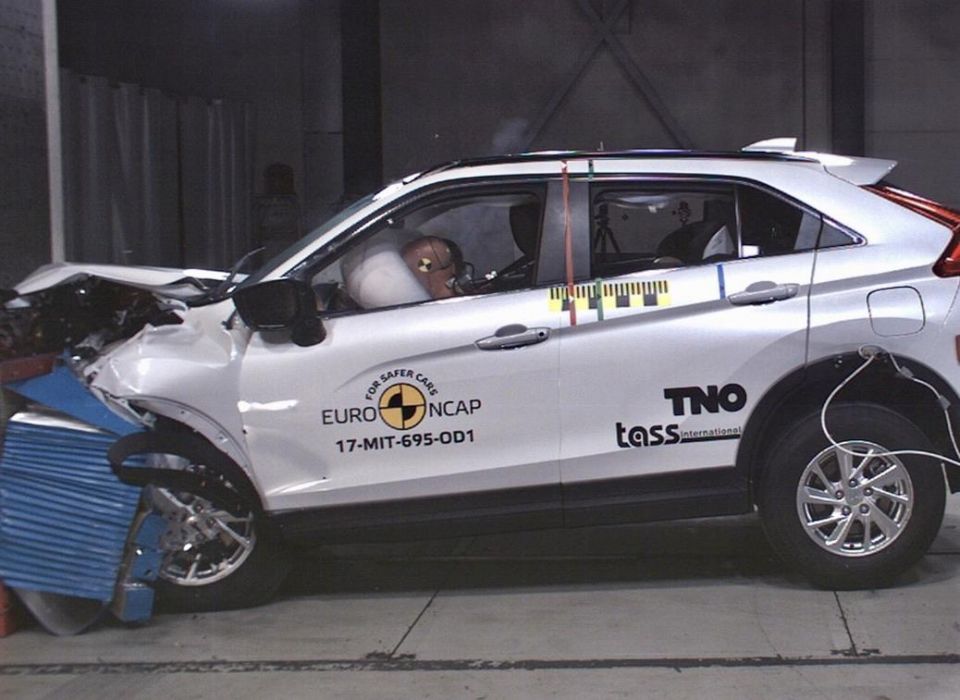
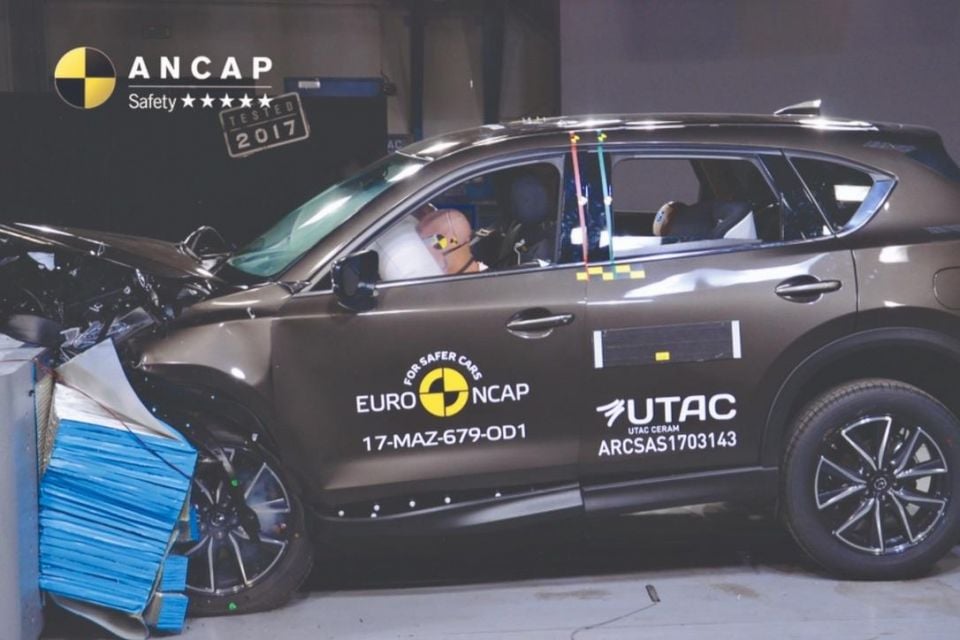
Both cars get dual front airbags, dual front thorax airbags, and dual full-length curtain airbags. The Eclipse Cross also gets a driver’s knee airbag.
Both have forward autonomous emergency braking and collision warning, lane-departure warning, blind-spot monitoring that lights up the side mirrors, rear cross-traffic alert, and adaptive cruise control. The Mazda adds an active (steering) lane-keeping aid but it’s not the most proactive and effective system of its type, and shouldn’t be solely relied upon.
There’s additional information on all the Mitsubishi and Mazda safety features within the Mitsubishi Eclipse Cross website and Mazda CX-5 specifications sheet.
Both cars scored five star ratings from crash tester ANCAP in 2017 with the following scores:
| Eclipse Cross Aspire | CX-5 Maxx Sport | |
|---|---|---|
| Adult protection | 97% | 95% |
| Child protection | 78% | 80% |
| Pedestrian protection | 80% | 78% |
| Safety assist | 58% | 59% |
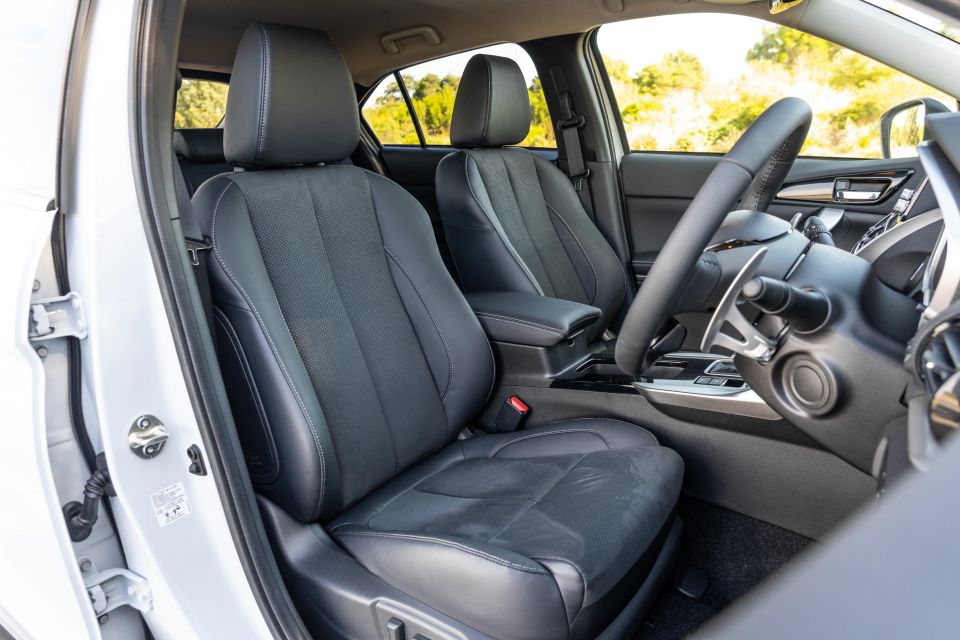
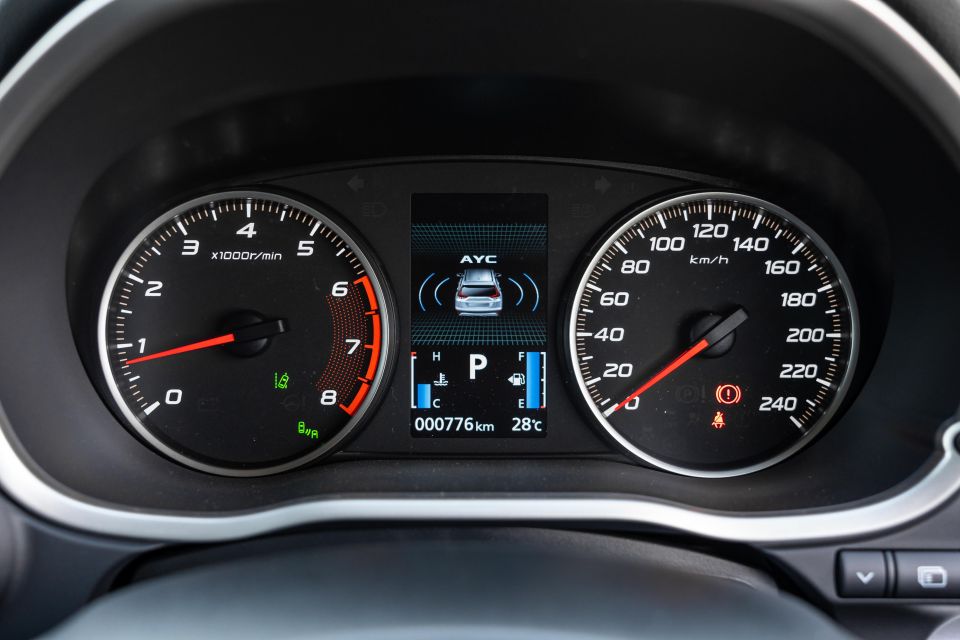
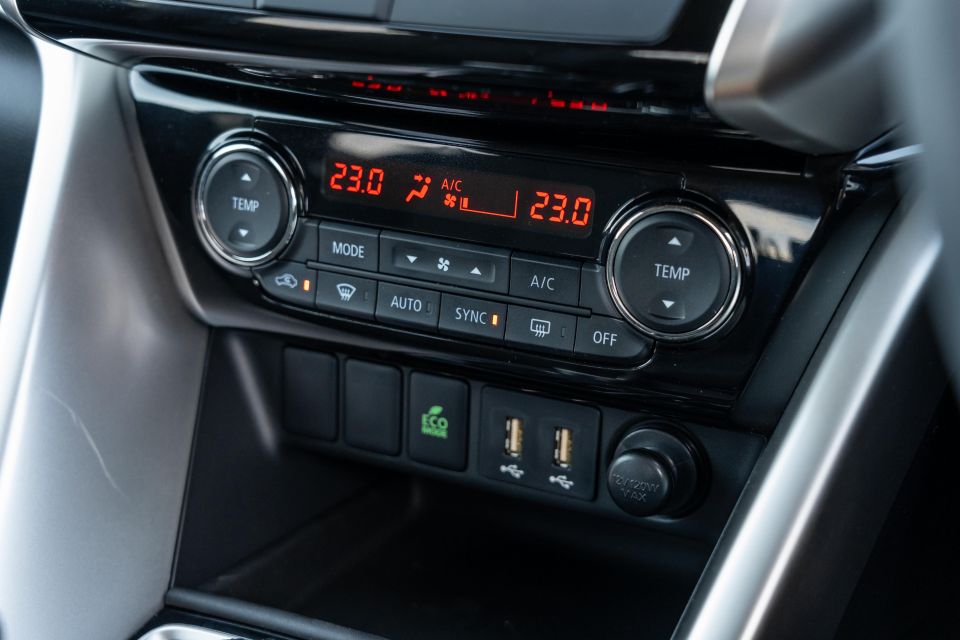
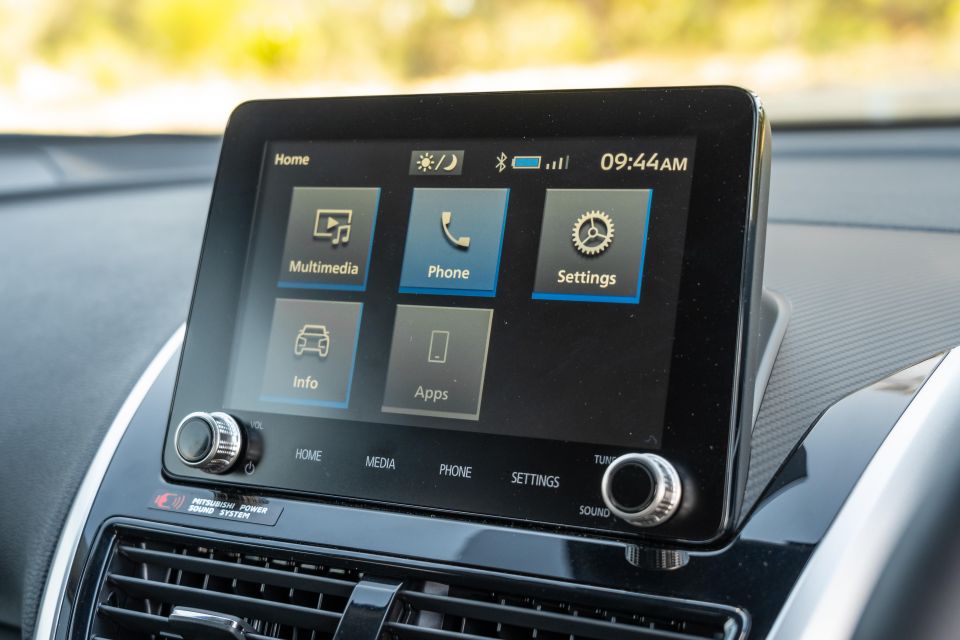
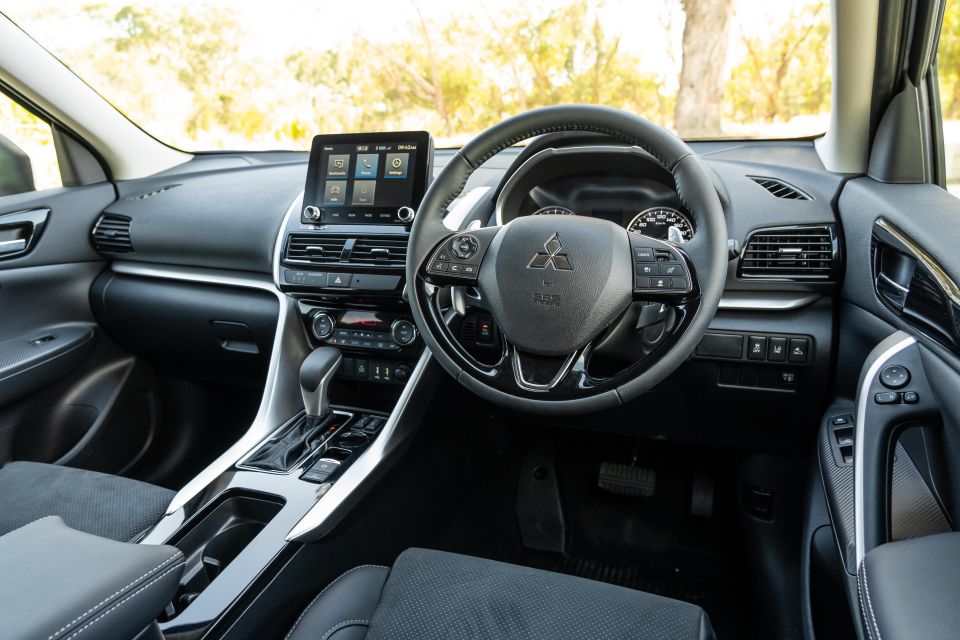
Mitsubishi:
Entry is made easy thanks to the fitment of a smart entry system that lets you unlock the car with the key fob in your pocket, which also tells the side mirrors to fold out into position.
You sit quite high and are afforded a good view of the road ahead, and both the seats and steering wheel have acceptable breadth of fore/aft and up/down movement, for most people to get comfortable, quickly.
The build quality is hard to find flaw with, though the material tactility and design nous isn’t at a level with a company like Mazda. It’s nicer than the ASX’s cabin, yes, but it’s no premium experience.
There’s a surfeit of cheap-looking shiny black plastic everywhere, the orange-lit ventilation display and stick-on sound system label below the screen look dated, and there are multiple button blanks scattered around to remind you of the features you’re missing out on.
The driver instruments are analogue, with the lack of digital speedo an oversight (unless you’re running the Waze app through your phone). Those large paddle shifters fitted to the steering column remind one of a Lancer Evo, and while they’re out of place they’re a bit cool.
The grainy material on the dash and doors is soft, ditto the centre console cover which serves as an armrest. But the way the centre fascia bulges outwards, and the gap between door handle and transmission tunnel, do make longer-legged occupants feel a little hemmed-in.
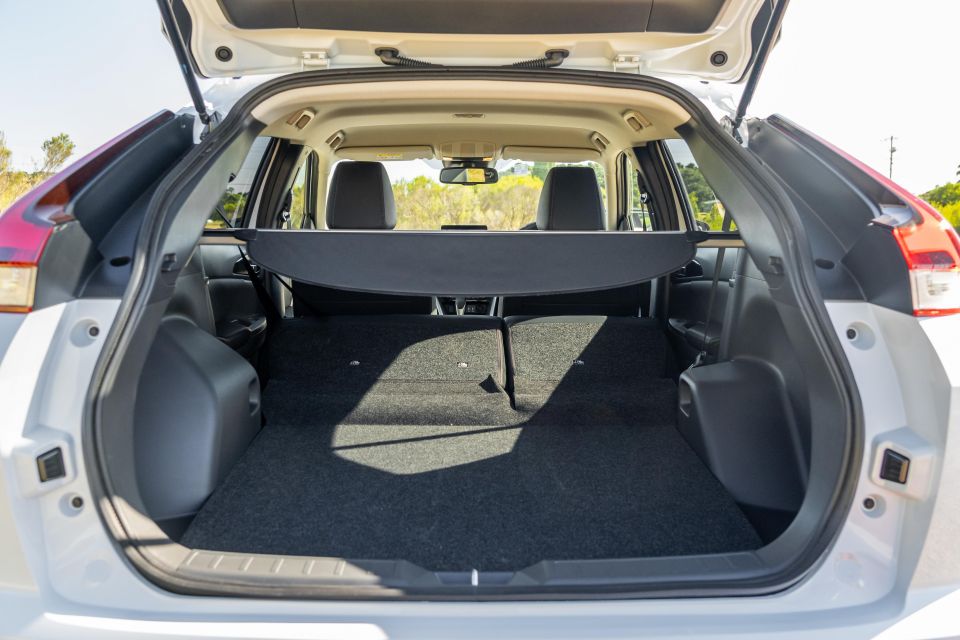
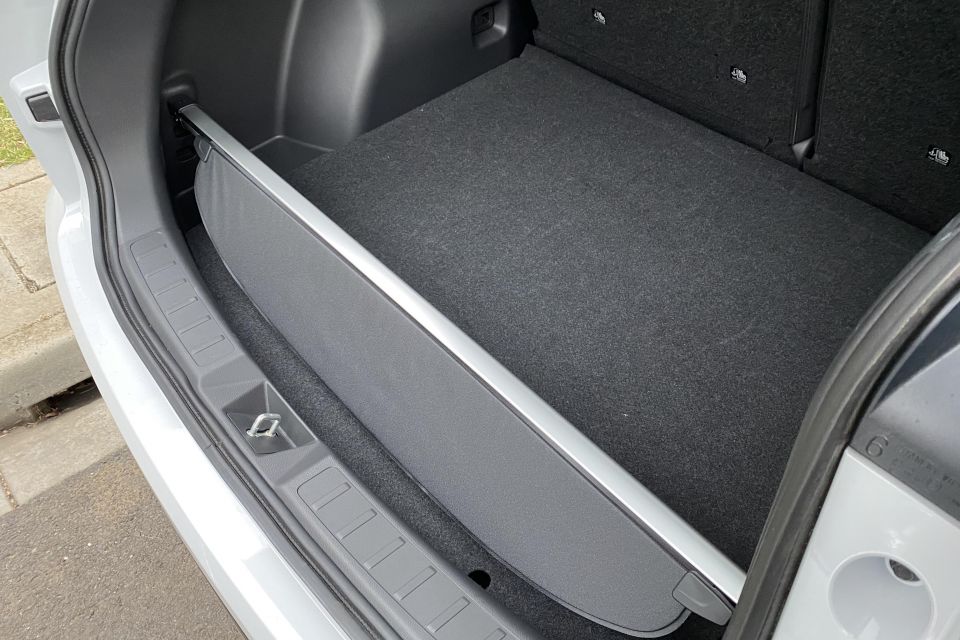

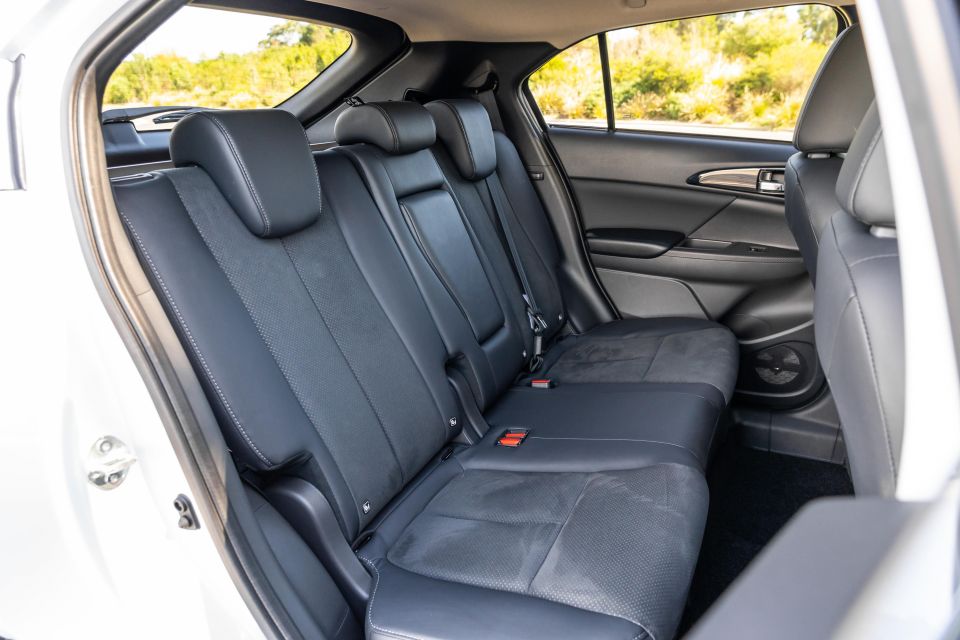
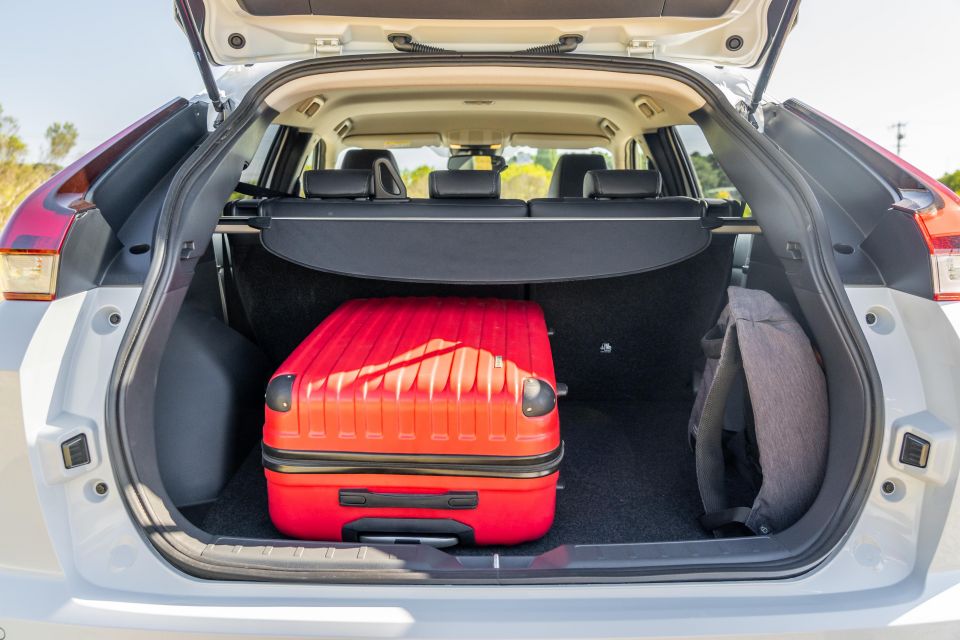
The touchscreen infotainment is quite simple and the voice control system average, but provided you’re just listening to the radio (including DAB), Bluetooth/USB, or using phone mirroring, it does the job to standard. The sound system is good, that dash-sticker aside.
There’s plenty of rear legroom and toe room, but that roofline means headroom is restricted for anyone my height (194cm), and the raked windows and large C-pillar inhibit outboard vision. There are also no rear air vents or USB points, though there is a 12V outlet. The back seats recline a few degrees, but no longer slide like the pre-facelifted car’s did.
The boot space has improved from a minimum of 341 litres to 405L (VDA standard), and while the seat bases no longer slide to increase cargo storage, the seat backs do still fold downwards. The boot measures 880mm long, 1000mm wide between the wheels, and 760mm tall.
There’s a space-saver spare wheel under the loading floor, and I like the fact there are dedicated clip-in points for the rigid cargo cover to be neatly stowed away in.
The entry aperture is more like a fastback or coupe-SUV than a conventional wagon, with that sloped rear reducing loading height but increasing the open space to load things through. In practicality terms it lags behind most mid-sized SUVs but edges the ASX.
You can find official photos of the Mitsubishi Eclipse Cross interior via the Mitsubishi official website.
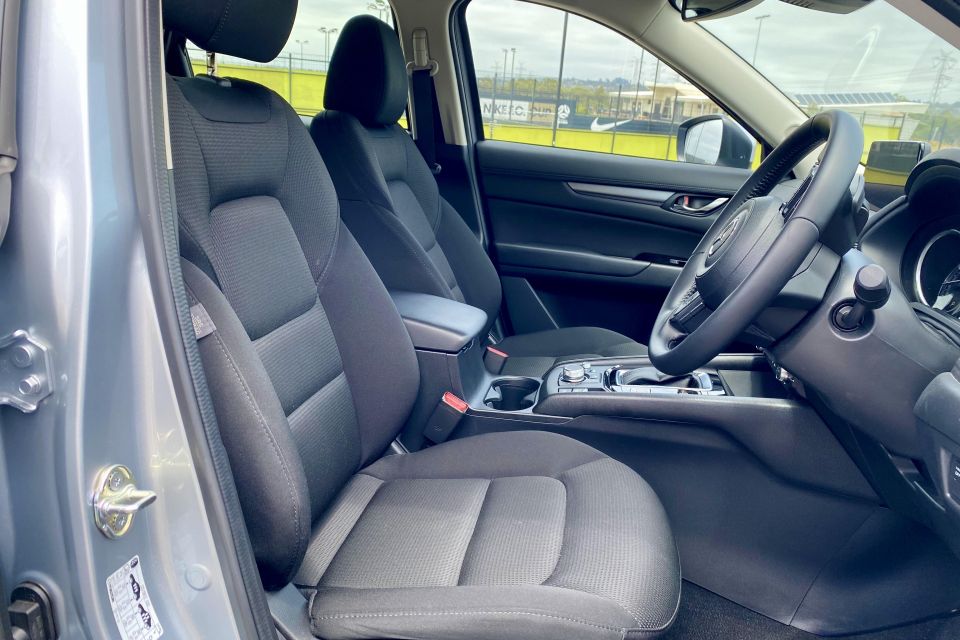
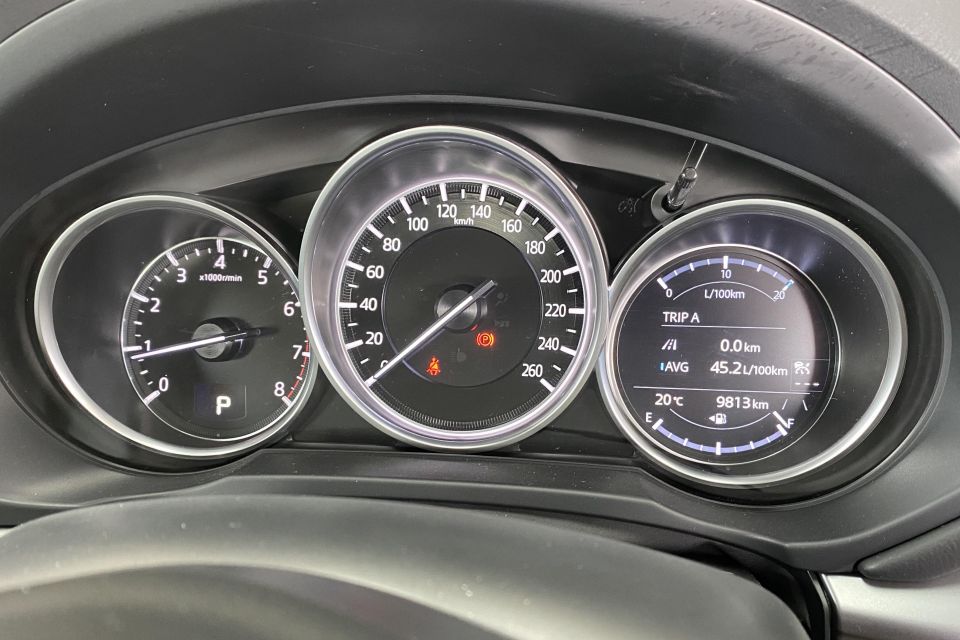

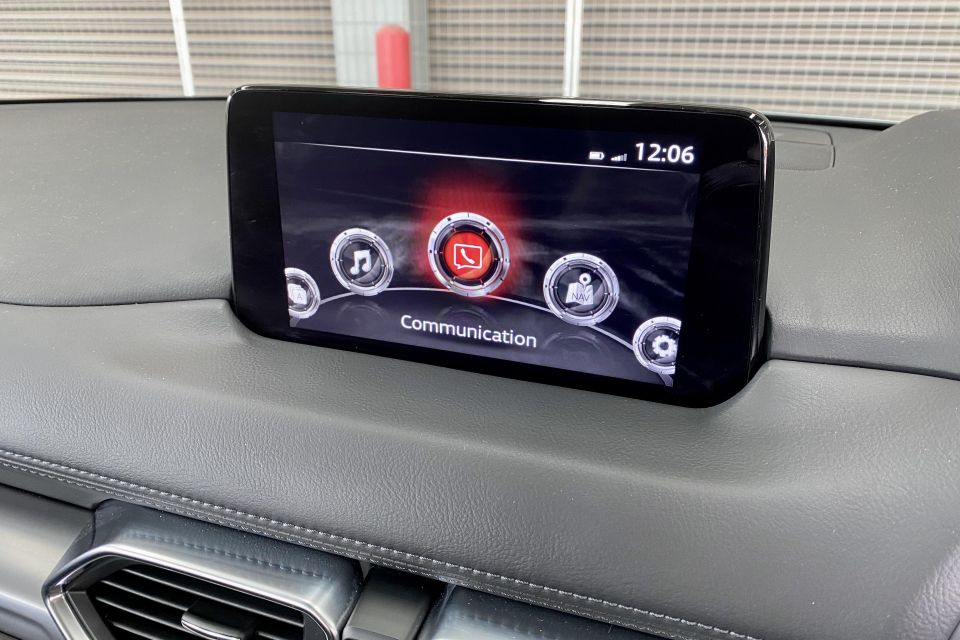
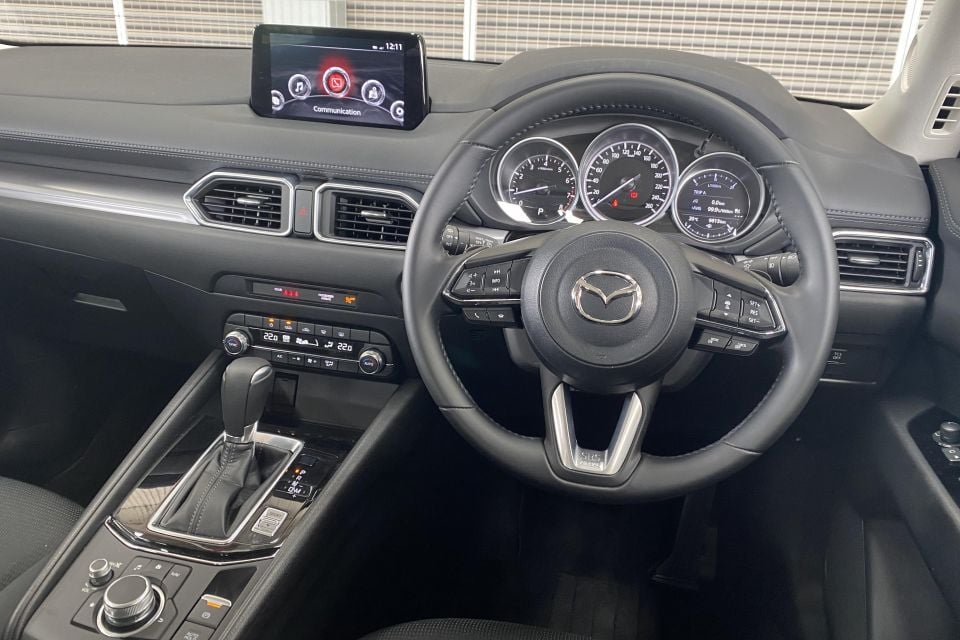
Mazda:
It’s a bit annoying having to pull the key fob from your pocket and press a button to unlock the Mazda, but maybe I’m being pedantic.
The seats are slightly longer in the base than the Mitsubishi’s, and while they’re manually adjustable, there’s a heap of movement. The leather-wrapped steering wheel is also nicer in the hands than the Eclipse Cross’s.
The material quality makes a nicer first impression than the Mitsubishi’s cabin, from the nice stitch work, damped and knurled switches, and solid silver-hued plastic inserts. Subjectively I also prefer its minimalist aesthetic. It feels a bit more special.
Some soft padded materials along the transmission tunnel where your knees rest wouldn’t go astray, but there’s more legroom up front than that slightly cramped Mitsubishi.
Like the Eclipse Cross there’s no digital speedo, but the analogue gauges are beautiful to behold. The soft dash and the damped steering wheel controls are nicer for the tactile-minded.
In terms of cabin storage, the door bins are a little shallower, and the console a bit smaller. But there’s a sunglasses cubby in the roof and a handy open section with padding under the centre stack.
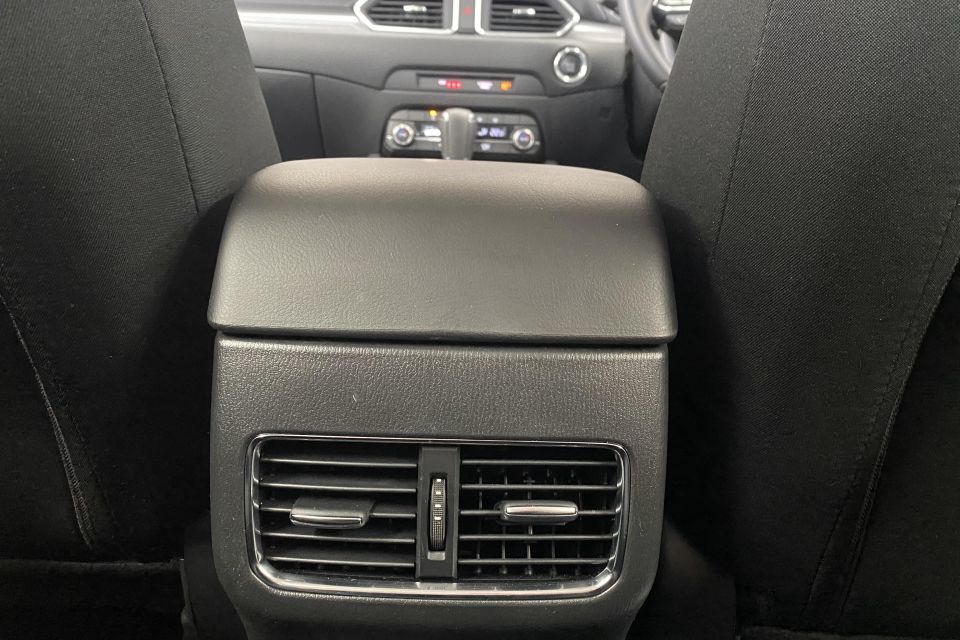
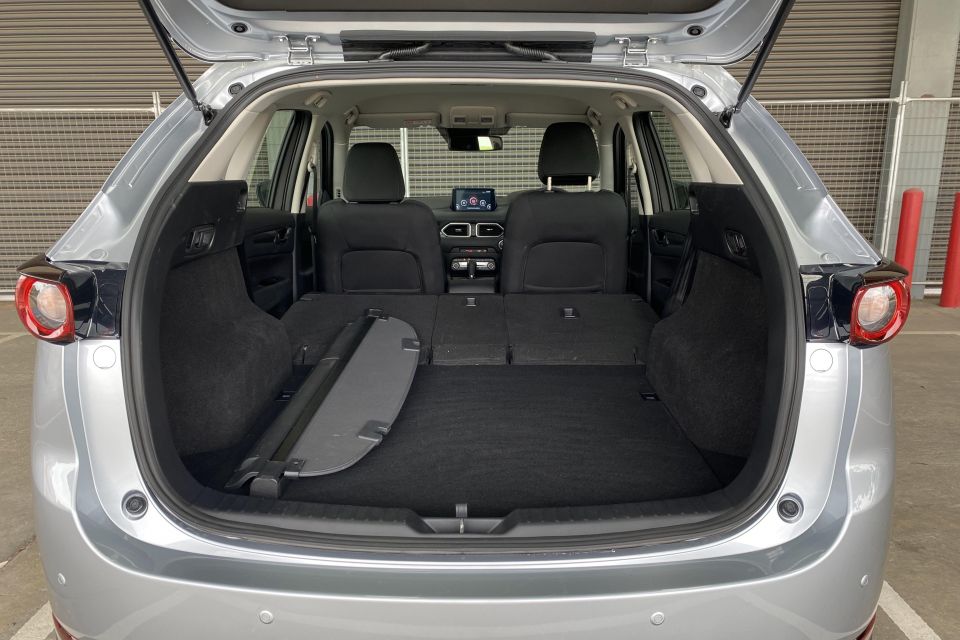

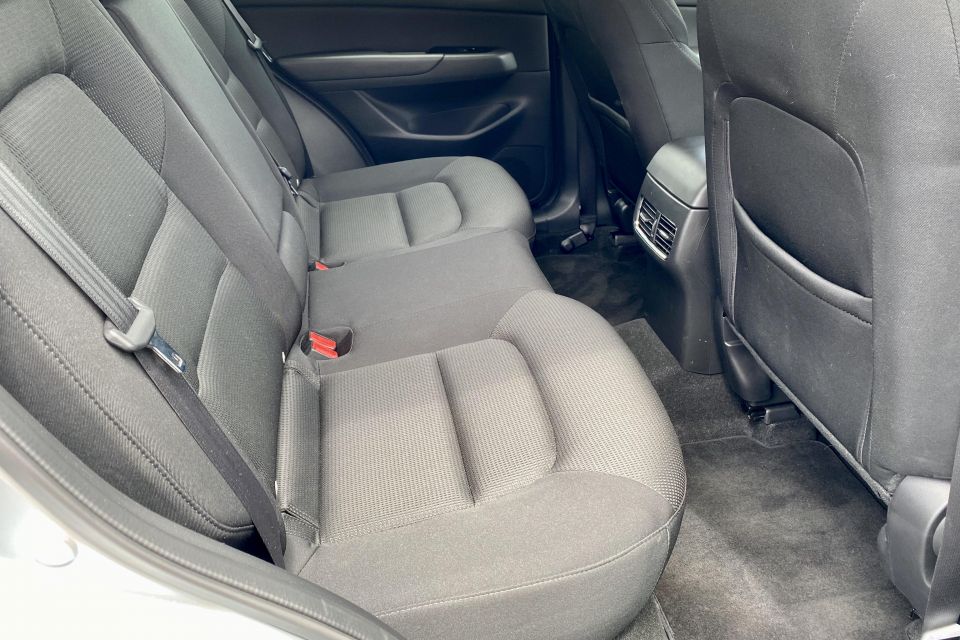
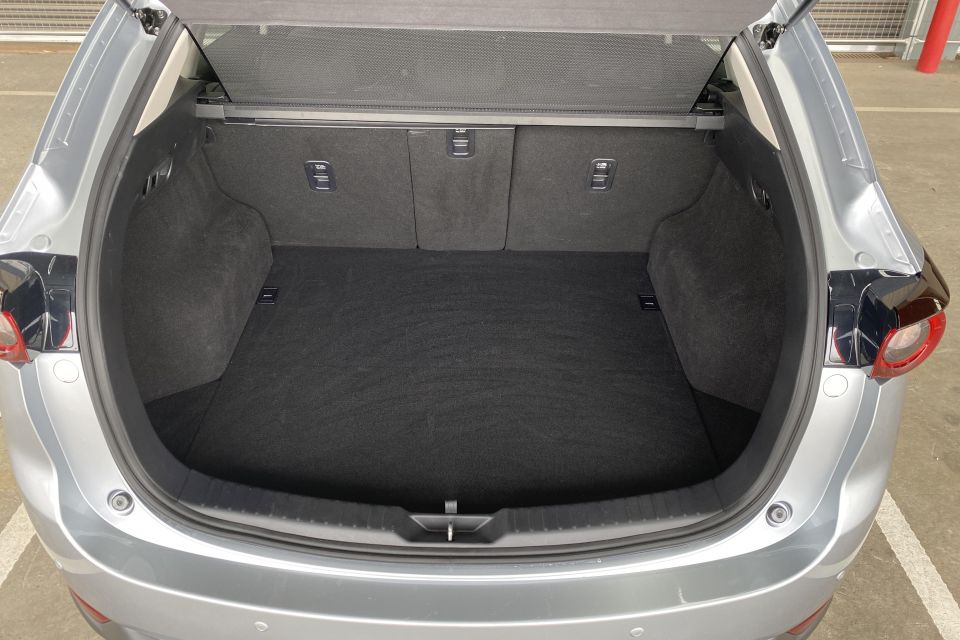
One area where it feels a little tired is infotainment. Mazdas like the CX-30 get newer iteration software, but the CX-5 retains an olde worlde MZD Connect system that has dated graphics and is a little laggy and slow to load.
At idle you can use it as a touchscreen but at speed you must use the rotary dial and buttons on the tunnel, which is actually a better solution when you’re on the move. We understand a 2021 CX-5 update will bring a new system, by the way. That’ll be most welcome.
The back seats have no more legroom than the Eclipse Cross despite an extra 30mm of wheelbase, but you have a few centimetres more headroom, more rear glass to help you see out, rear air vents, and two USB points situated in a pull-down armrest that also sports cupholders and a felt-lined shallow cubby.
Boot space is 442L, so 37L greater than the Mitsubishi offers. The boot is also 40mm wider between the wheel arch humps, 80mm longer from the lip to the back seat, and 30mm taller floor to roof.
You also get a clever clip-on cargo shelf that lifts with the tailgate, and levers to flip the 40:20:40 seatback forwards, from the cargo area itself. This split rear seat is great, because you can fold down the middle section to feed through long items while keeping the outboard seats useable.
If you’re regularly carrying four or five passengers and their gear, the Mazda has the edge, even though there are even roomier options such as the Honda CR-V and Toyota RAV4.
You can find official photos of the Mazda CX-5 interior via the official website. To see the various interior options and inclusions in the Mazda CX-5 range download the Mazda CX-5 specifications sheet.
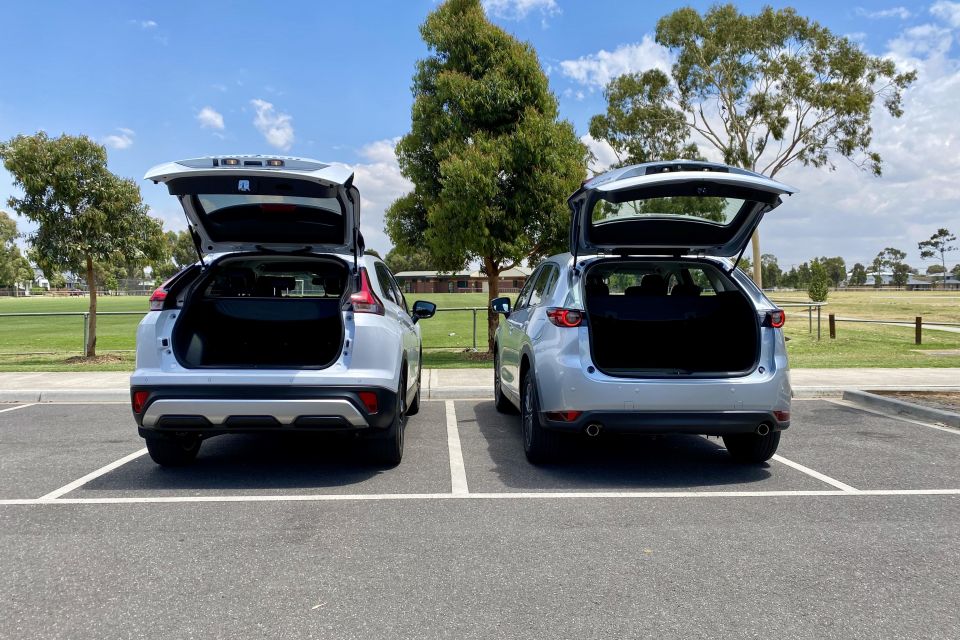
| Eclipse Cross Aspire | CX-5 Maxx Sport | |
|---|---|---|
| Length | 4545mm | 4550mm |
| Width | 1805mm | 1840mm |
| Height | 1685mm | 1675mm |
| Wheelbase | 2670mm | 2700mm |
| Boot space VDA | 405L | 442L |
| Boot width between arches | 1000mm | 1040mm |
| Boot length to back seat | 880mm | 960mm |
| Boot height floor to roof | 760mm | 790mm |
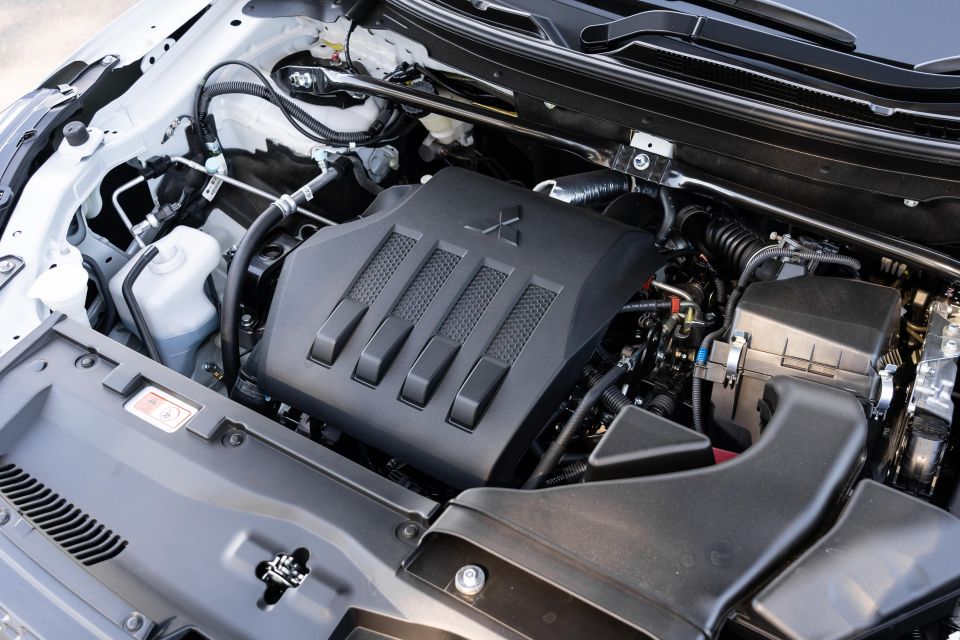
Mitsubishi:
The Mitsubishi runs a brand-exclusive 1.5-litre turbocharged petrol four-cylinder making 110kW of power at 5500rpm and 250Nm of torque between 2000 and 3500rpm.
It sends torque to the front wheels (on-demand all-wheel drive is only available on LS and Exceed grades) through a CVT automatic with eight stepped ratios controlled by paddle shifters stuck to the steering column.
Mitsubishi claims fuel economy on the combined cycle of 7.3 litres per 100km. The fuel tank stores 63 litres and the engine will run on basic 91 RON fuel. My average zero to 100km/h sprint took 8.8 seconds.
Further engine specifications can be found within the official Mitsubishi Eclipse Cross website.
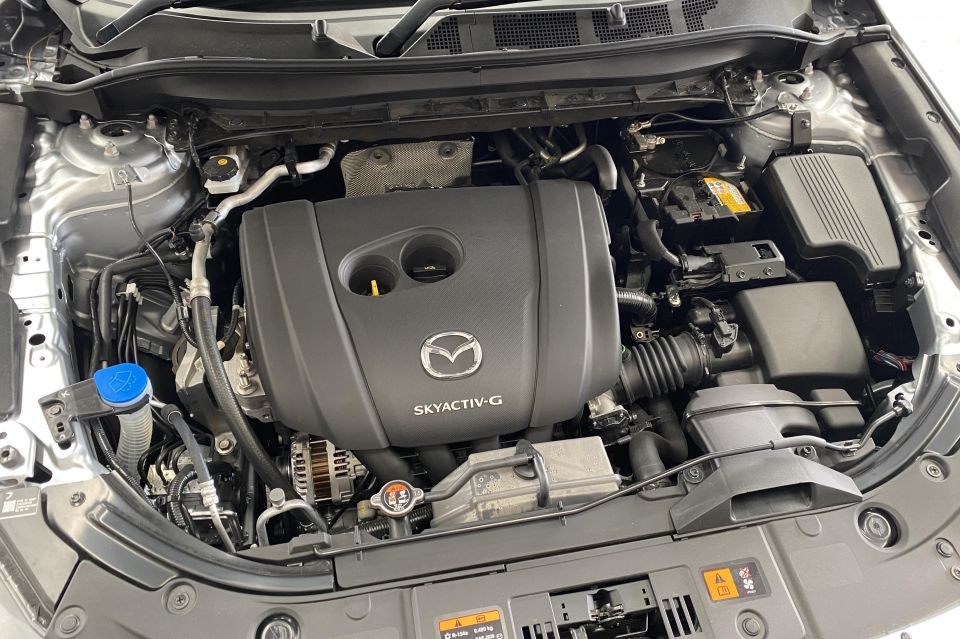
Mazda:
While higher grades of Mazda CX-5 get numerous engine options (2.5-litre naturally aspirated or turbocharged petrol, and a 2.2-litre twin-turbo diesel) and AWD, base models like this one use a naturally-aspirated 2.0-litre four-cylinder petrol.
It makes 115kW of power at 6000rpm and 200Nm of torque at 5000rpm – so it has 5kW more but 50Nm less than the Mitsubishi – driving the front wheels through a six-speed torque-converter automatic transmission with sports mode.
Mazda claims fuel economy of 6.9L/100km, helped along by the fitment of idle stop/start. The fuel tank stores 56L and it’ll run on 91 RON too. My average 0-100km/h time was 10.6 seconds.
Further engine specifications can be found within the official Mazda CX-5 specifications sheet.
| Eclipse Cross Aspire | CX-5 Maxx Sport | |
|---|---|---|
| Engine | 1.5-litre turbo | 2.0-litre naturally aspirated |
| Power | 110kW @ 5500rpm | 115kW @ 6000rpm |
| Torque | 250Nm @ 2000-3500rpm | 200Nm @ 4000rpm |
| Transmisison | CVT, paddles | 6-speed auto |
| Driven wheels | Front | Front |
| Fuel economy ADR | 7.3L/100km 91 RON | 6.9L/100km 91 RON |
| Our fuel economy | 8.6L/100km | 7.7L/100km |
| Power-to-weight | 74.3kW/t | 73.8kW/t |
| 0-100km/h | 8.8 seconds | 10.6 seconds |
| Towing capacity | 1600kg | 1800kg |

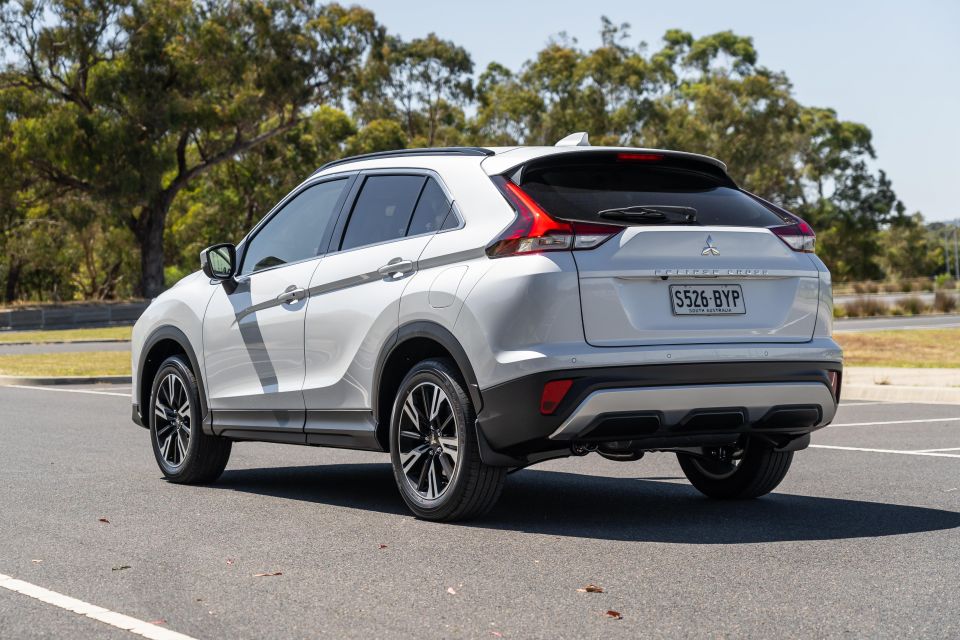

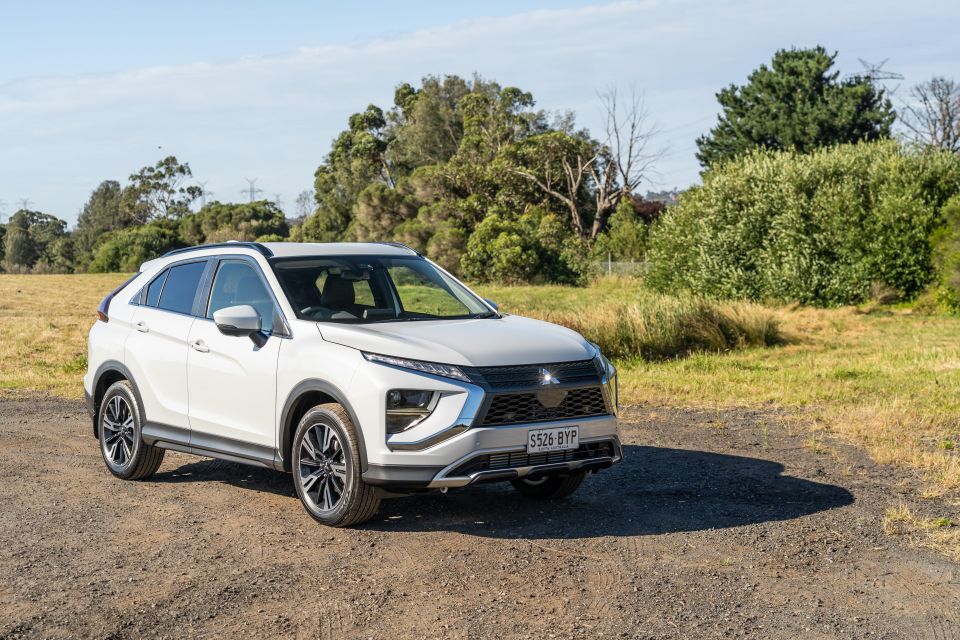
Mitsubishi:
The Mitsubishi’s turbo engine is quite good, with more engine torque that’s available earlier and over a wider part of the rev band. It gives you decisive rolling response, and is quicker off the mark – as the 1.4 second advantage in the 0-100km/h average times proves.
It’s less efficient than the Mazda though, both in ADR bench testing and in my real-world evaluation (8.6L/100km versus 7.7L/100km). The fitment of stop/start in the Mazda and not the Mitsubishi helps with this.
The CVT automatic is better than most other units of this type, with stepped ‘ratios’. It’s never really too ‘elastic’ from take-off, and doesn’t flare way up the rev counter because there’s plenty of torque to coast with. Those paddles? Extraneous, but nifty to look at.
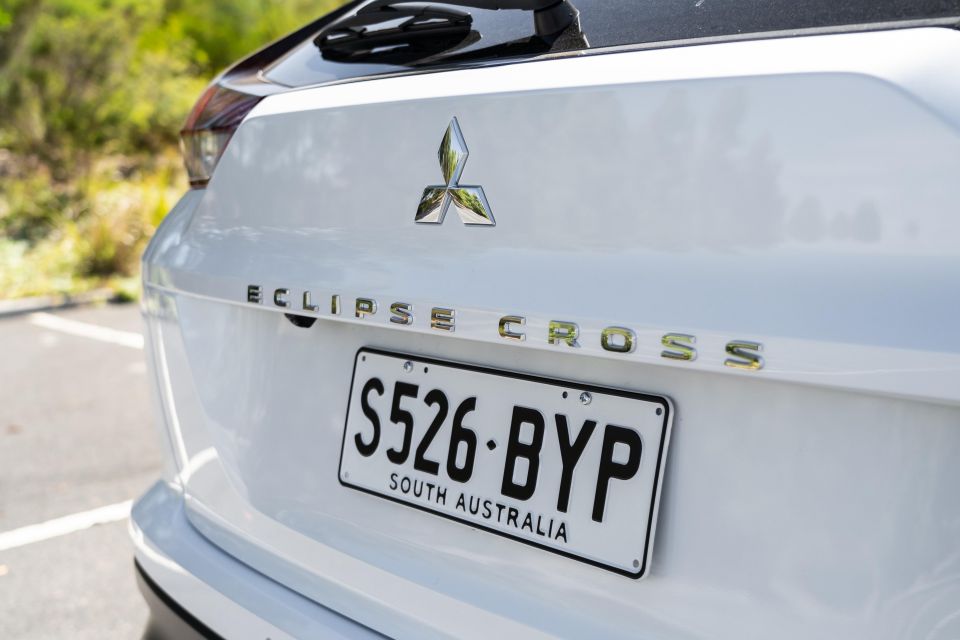

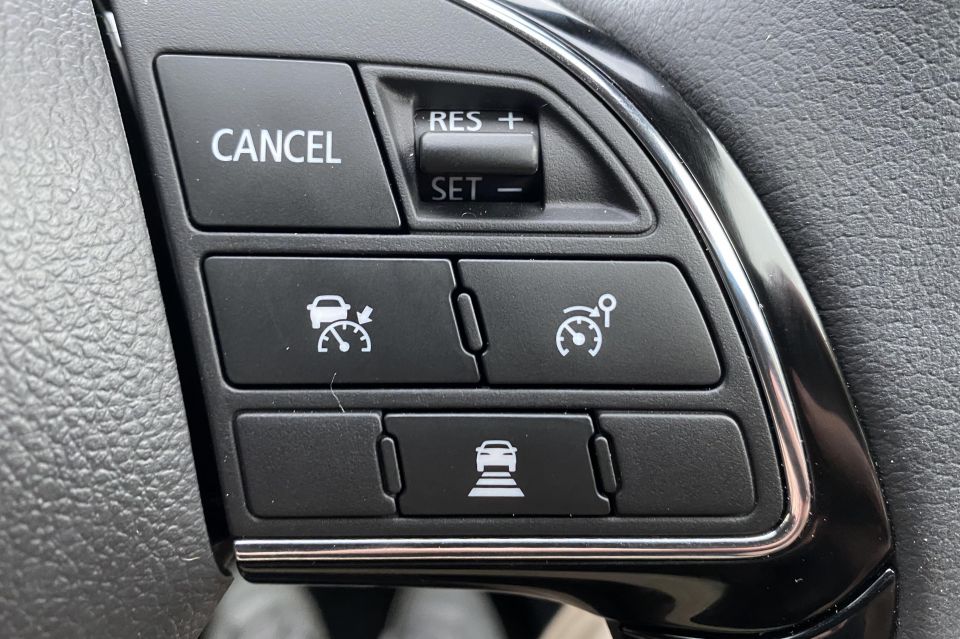
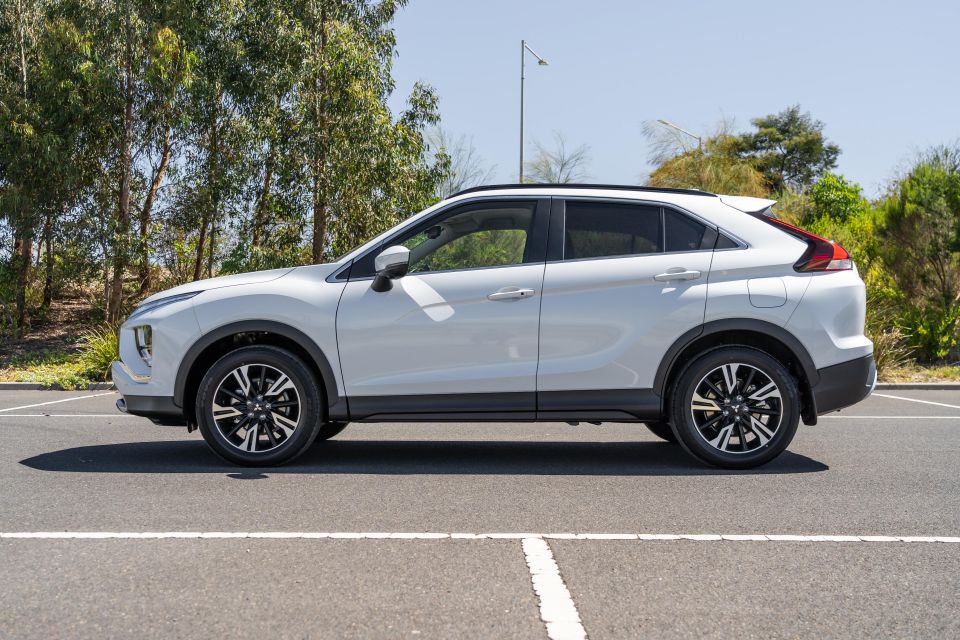
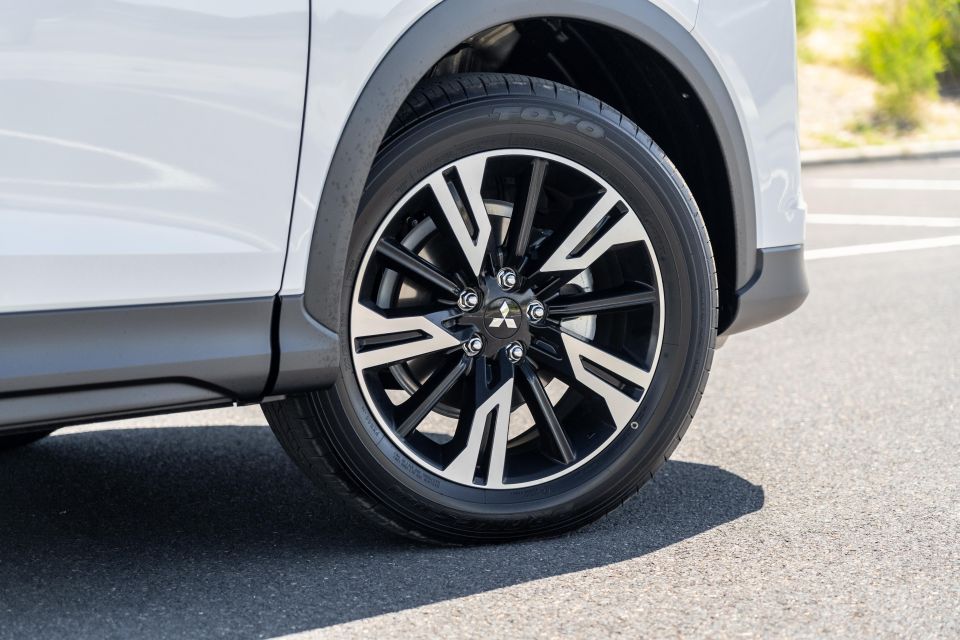
Dynamically, it doesn’t live up to the sporty design, or the Eclipse badge (affixed to a sporty coupe in the US sold during the 1990s and 2000s).
Granted, it’s perfectly at home around town with a generally nice loping ride quality, super-light steering at low speeds, and a commanding driving position. But it also leans into corners a little bit, and the steering is still a little lacking in feedback despite some revisions.
The Toyo tyres aren’t too bad, though they do emit some screeching once you barrel into a corner too quickly. At 100km/h over a country back road, I recorded the ambient driving noise at 70dB – which was 2dB louder than the refined Mazda. That’s not much, but it’s something.
While the Active Yaw Control system that controls torque delivery to the wheels helps, I’d love Mitsubishi’s great Super All-Wheel Control all-wheel drive (AWD) system to be made available at this spec grade, because it’d add a little dynamism and versatility.
If you’re interested in getting behind the wheel of the Mitsubishi Eclipse Cross, you can book a test drive via the Mitsubishi website. Or you can speak to your local Mitsubishi dealer to arrange one.
If you have any questions or queries, you can find out more details by submitting a request on Mitsubishi official website.
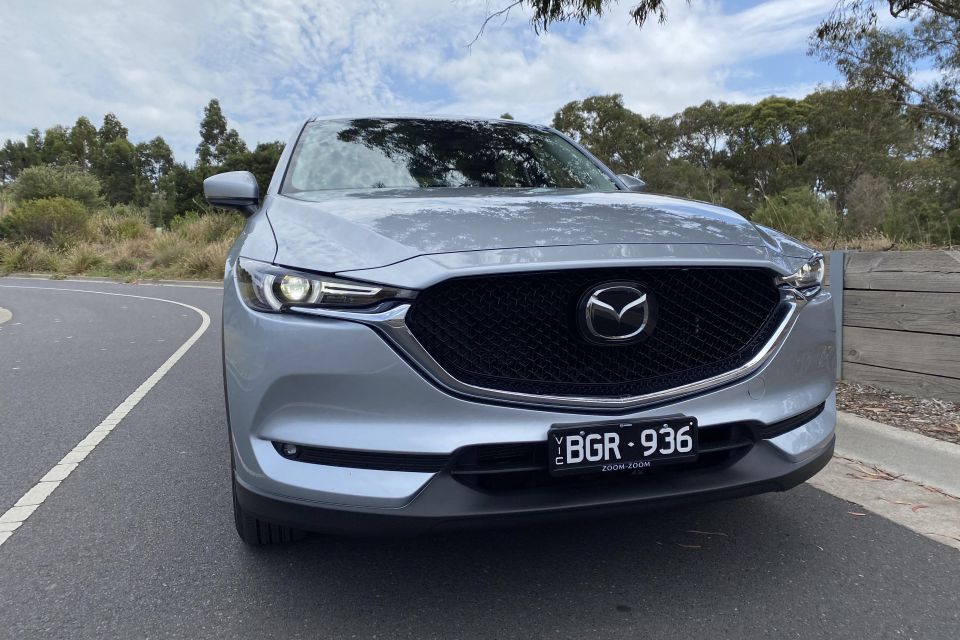
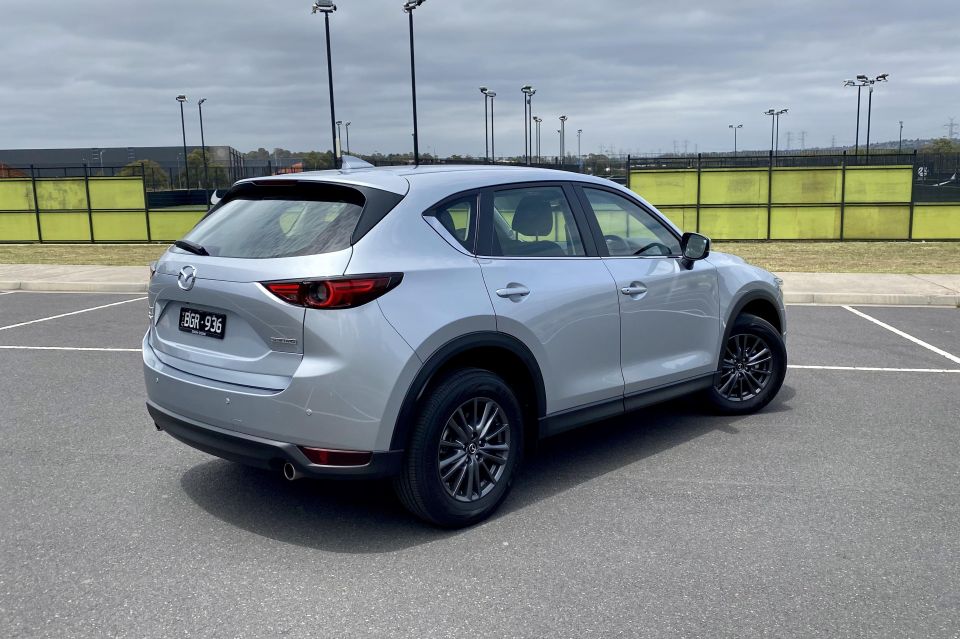
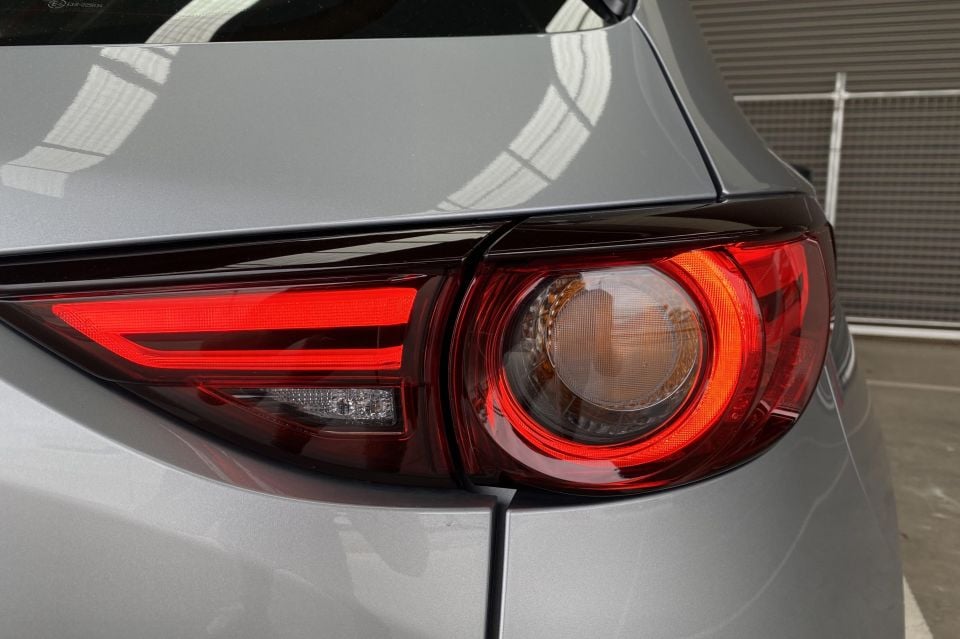
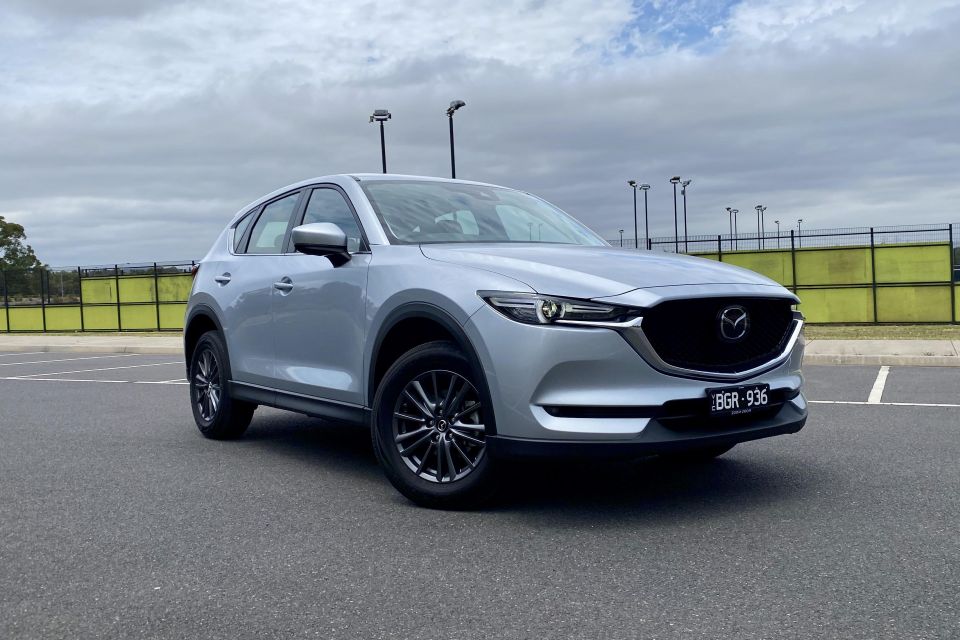
Where expert car reviews meet expert car buying – CarExpert gives you trusted advice, personalised service and real savings on your next new car.
Mazda:
The Mazda’s 2.0-litre petrol engine has a nice raspy note and loves revs, which lends character. But it’s a little underdone, requiring you to thrash it if you want to really get somehere in a hurry. I can’t imagine it’d love towing its 1800kg maximum with a load of passengers…
For highway cruising it’s fine though, and while it needs some winding up, it’s also peppy and immediately responsive enough to keep up with traffic and dart into a gap. The issue is, the CX-5 is a premium product and this engine isn’t.
The six-speed transmission is usually quite smooth, and in Sports mode aggressively flares the revs on downshifts, though refinement is undermined when it has to shuffle backwards up hills. As with the Eclipse Cross, it’s front-wheel drive only.
Where Mitsubishi uses Active Yaw Control, Mazda has a system called G-Vectoring, which can cleverly cut engine delivery to the wheels to transfer the car’s weight and tighten your lines. It’s hard to feel, but does improve stability by increments.
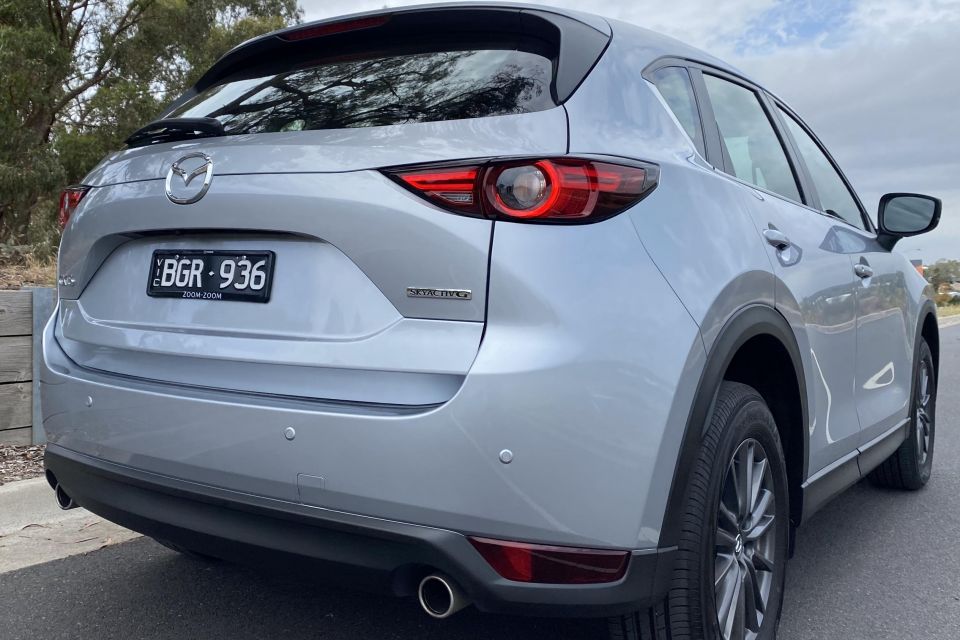

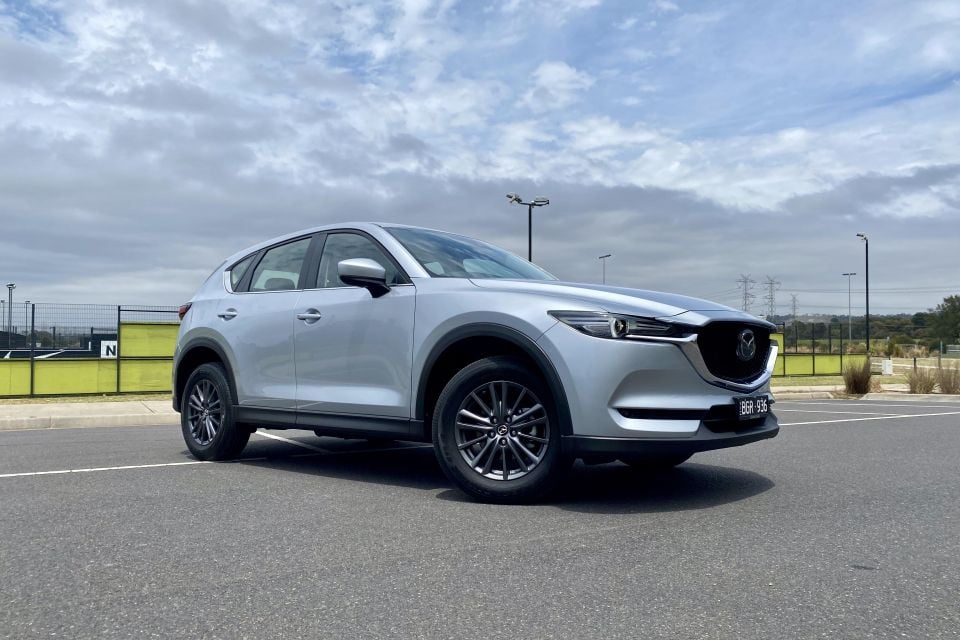

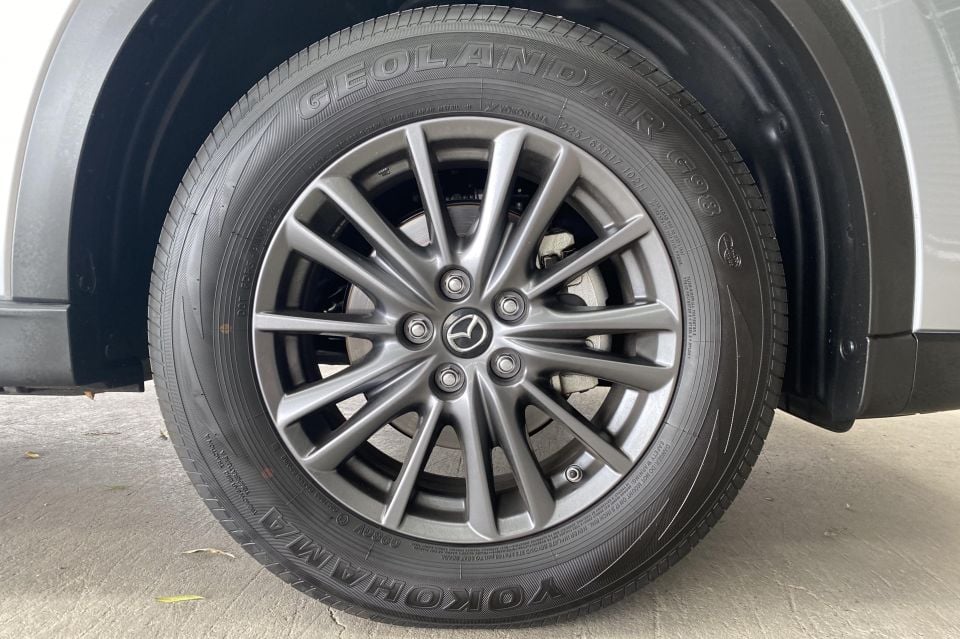
It remains one of the dynamic benchmarks in the class, and not just in terms of its quietude and refinement.
There’s more steering weight and feel (but also some kickback), and it inspires a little more confidence during aggressive cornering. It’s also quieter over sharp hits like speed bumps, and has a slightly smoother ride quality that isolates you better – an extra 10mm of tyre sidewall helps.
The fact the Mazda is quieter, more cushioned, yet also sharper handing, means it’s more dynamically well-sorted. But the Mitsubishi’s drivetrain is better in turn.
If you’re interested in getting behind the wheel of the Mazda CX-5, you can book a test drive via the Mazda website. Otherwise you can head down to your local Mazda dealer to arrange one.
| Eclipse Cross Aspire | CX-5 Maxx Sport | |
|---|---|---|
| Front suspension | MacPherson strut | MacPherson strut |
| Rear suspension | Multi-link | Multi-link |
| Front brakes | Ventilated discs | Ventilated discs |
| Rear brakes | Solid discs | Solid discs |
| Kerb weight | 1480kg | 1559kg |
| Payload | 609kg | 466kg |
| Turning circle | 10.9 metres | 11 metres |
| Ground clearance | 175mm | 193mm |

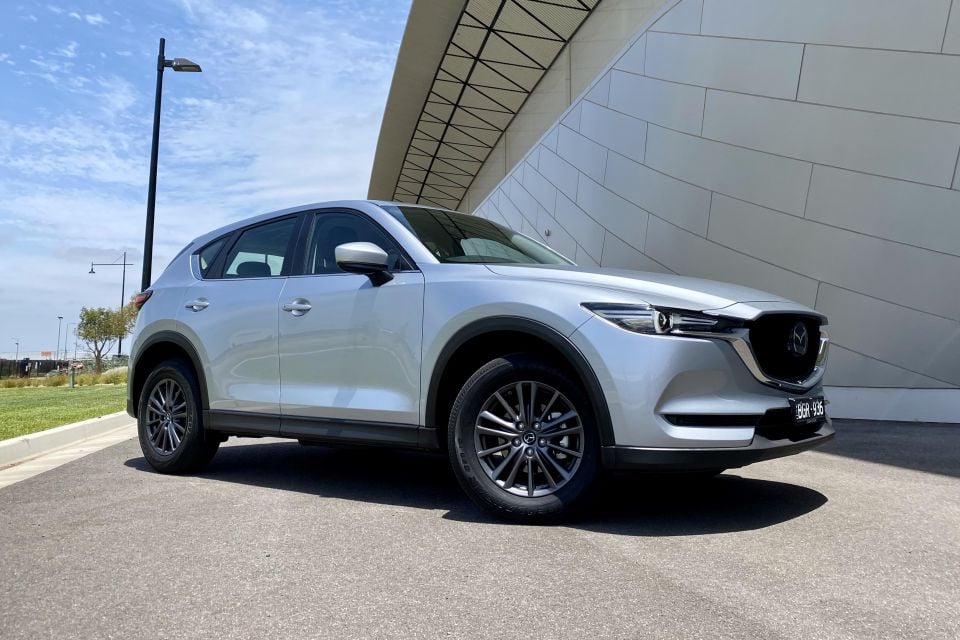
Mitsubishi:
Mitsubishi’s standard warranty covers five years or 100,000km, but so long as you return to one of its dealerships at each service this extends to 10 years or 200,000km. That’s the longest warranty on the market.
While not everyone likes using dealer servicing, Mitsubishi’s capped-price scheme keeps the costs reasonable. Servicing intervals are 12 months or 15,000km and each of the first five visits costs $299.
Mazda:
Mazda’s standard warranty covers five years and unlimited kilometres. So if you do more than the average mileage (15,000km per year) then you’ll be particularly well suited.
It’s more expensive to service than the Mitsubishi. The intervals are 12 months or 10,000km, meaning you’re likely to need to return to the dealer or mechanic with more regularity.
The first five visits cost $330, $360, $330, $360, and $330, plus $80 every 40,000km for a new cabin air filter and $71 every two years for new brake fluid.
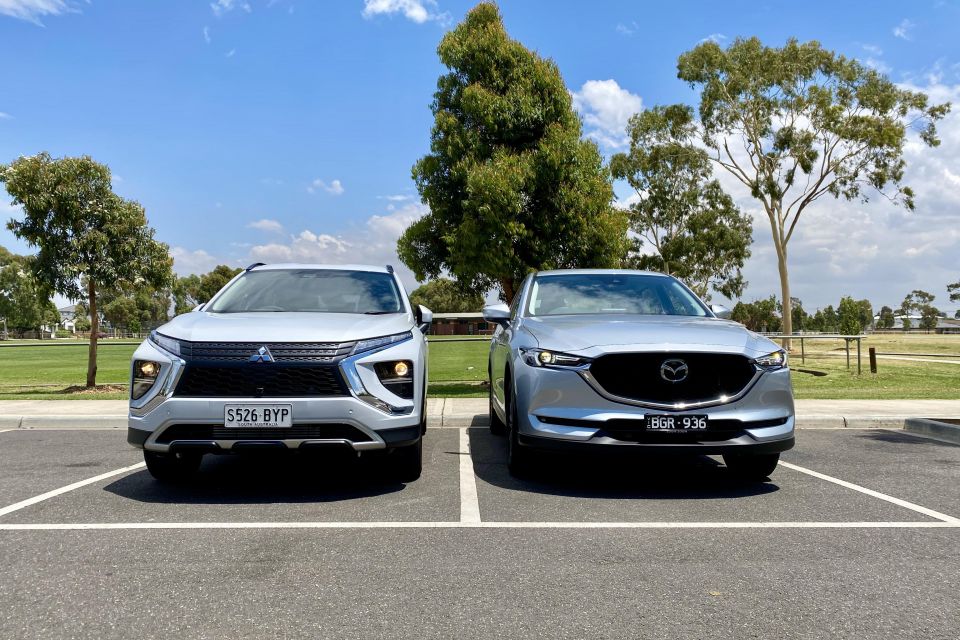
The Mitsubishi Eclipse Cross certainly has a distinctive, wedge-like design to it that’ll probably win over and alienate prospective buyers in equal measure. I personally like the boldness.
It also has a smoother and torquier drivetrain than the Mazda, comes with more standard features despite costing a smidgen less, and promises lower running costs.
But the Mazda CX-5 has a more premium-feeling interior, gets valuable extras like sat-nav and LED headlights, has roomier and better-equipped back seats, and offers a quieter and more comfortable ride concurrent with more agile cornering.
That’s enough to overlook its underpowered engine and higher service costs, and to give it a narrow win. This surprise twin-test has yielded an unsurprising result, then.
MORE: Mazda CX-5 news and reviews MORE: Mitsubishi Eclipse Cross news and reviews
Share your thoughts with us in the comments below!
Share your thoughts and write a review of a car you own and get featured on CarExpert.


CarExpert.com.au
6 Hours Ago


Damion Smy
20 Hours Ago


Damion Smy
23 Hours Ago


Damion Smy
1 Day Ago


Damion Smy
1 Day Ago


Damion Smy
1 Day Ago